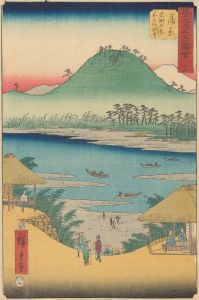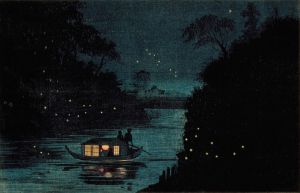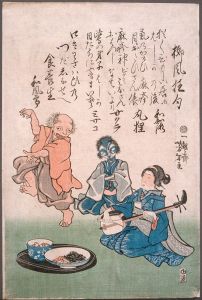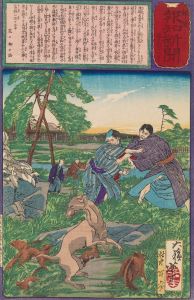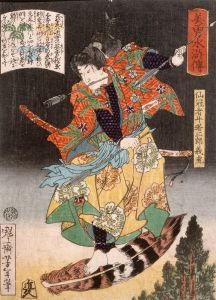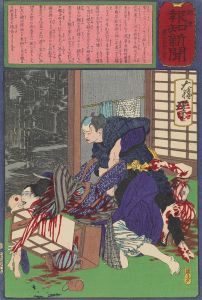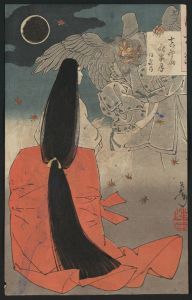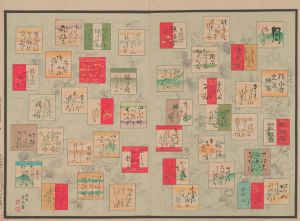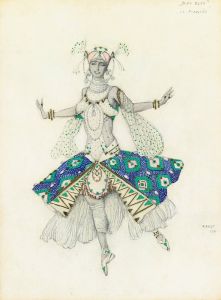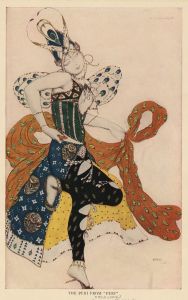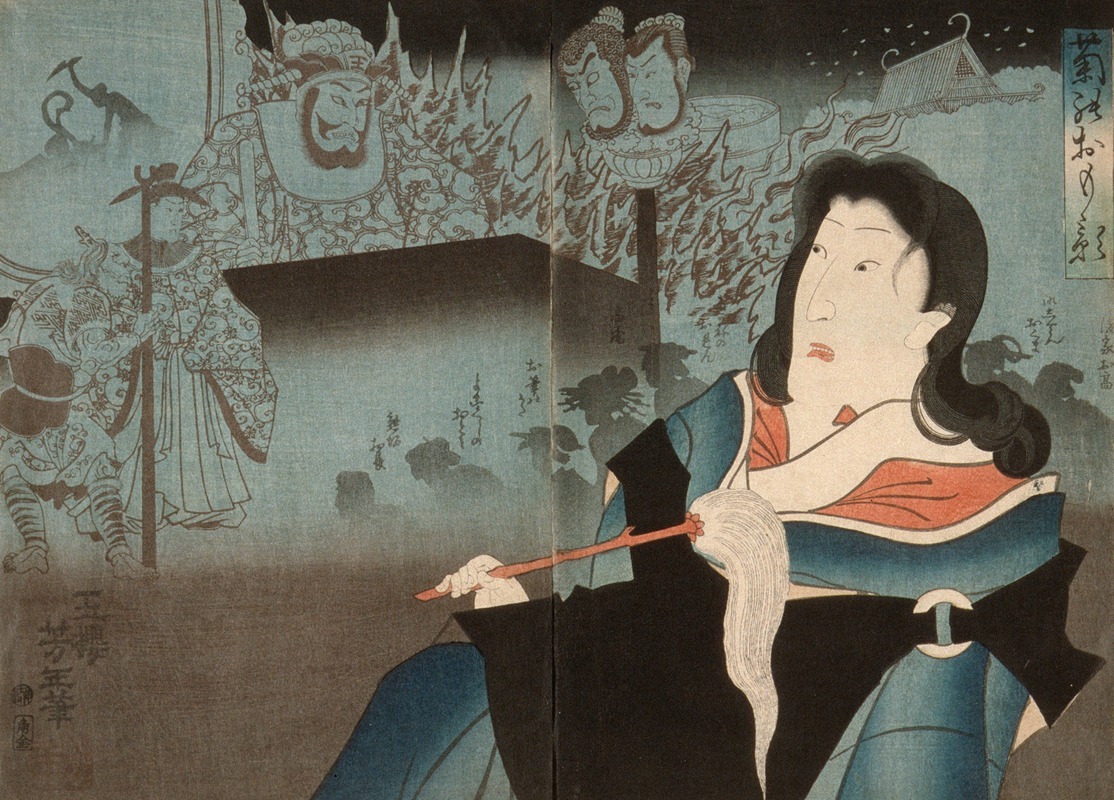
A Memorial Portrait of Onoe Kikugorō IV
A hand-painted replica of Tsukioka Yoshitoshi’s masterpiece A Memorial Portrait of Onoe Kikugorō IV, meticulously crafted by professional artists to capture the true essence of the original. Each piece is created with museum-quality canvas and rare mineral pigments, carefully painted by experienced artists with delicate brushstrokes and rich, layered colors to perfectly recreate the texture of the original artwork. Unlike machine-printed reproductions, this hand-painted version brings the painting to life, infused with the artist’s emotions and skill in every stroke. Whether for personal collection or home decoration, it instantly elevates the artistic atmosphere of any space.
"A Memorial Portrait of Onoe Kikugorō IV" is a woodblock print created by the renowned Japanese artist Tsukioka Yoshitoshi. This artwork is part of Yoshitoshi's extensive body of work that captures the vibrant and dynamic world of kabuki theater, a traditional form of Japanese drama known for its stylized performances and elaborate costumes.
Tsukioka Yoshitoshi (1839–1892) was a prominent figure in the ukiyo-e art movement during the late Edo and early Meiji periods. He is celebrated for his innovative approach to woodblock printing and his ability to convey emotion and drama through his art. Yoshitoshi's works often reflect the cultural and societal changes occurring in Japan during his lifetime, as the country transitioned from a feudal society to a more modern state.
Onoe Kikugorō IV (1844–1903) was a famous kabuki actor, known for his exceptional talent and versatility on stage. He was part of the illustrious Onoe lineage, a family with a long history in the kabuki theater. Kikugorō IV was particularly renowned for his ability to perform both male and female roles, a skill highly prized in kabuki, where all roles are traditionally played by men.
The memorial portrait created by Yoshitoshi is a tribute to Kikugorō IV, capturing the essence of his theatrical presence and the cultural significance of his performances. In this print, Yoshitoshi employs his characteristic style, combining bold lines and vibrant colors to depict Kikugorō IV in a manner that emphasizes both his physical likeness and his stage persona. The portrait is not just a representation of the actor but also an homage to the art of kabuki itself, highlighting its importance in Japanese culture.
Yoshitoshi's work often includes elements of realism and fantasy, and this portrait is no exception. The artist's attention to detail in the actor's costume and expression reflects his deep understanding of kabuki's theatricality and the role of the actor in bringing stories to life. The print serves as a historical document, preserving the legacy of Kikugorō IV and offering insight into the world of kabuki during the Meiji era.
This particular work is part of a larger series by Yoshitoshi that features various actors and scenes from kabuki theater. Through these prints, Yoshitoshi not only celebrated individual performers but also contributed to the broader appreciation and understanding of kabuki as an art form. His portraits are valuable resources for historians and art enthusiasts alike, providing a window into the cultural landscape of 19th-century Japan.
In summary, "A Memorial Portrait of Onoe Kikugorō IV" by Tsukioka Yoshitoshi is a significant piece of art that honors the legacy of a celebrated kabuki actor. It exemplifies Yoshitoshi's mastery of the woodblock print medium and his ability to capture the spirit of Japanese theater. This work remains an important part of both Yoshitoshi's artistic oeuvre and the historical record of kabuki theater.





